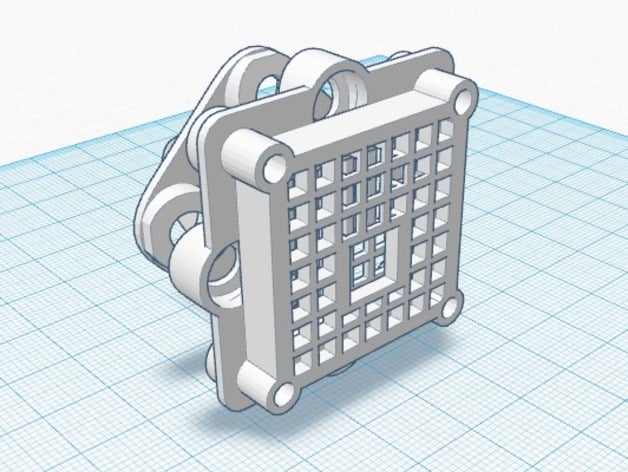
Raspberry Pi Camera Anti Vibration Mount
thingiverse
I was looking for an anti-vibration mount for my RasPi Camera, but nothing worked out. I decided to take matters into my own hands and create one from scratch. I started with Dvogonen's lightweight case with holes, which can be found on Thingiverse (https://www.thingiverse.com/thing:533865). I then searched for an anti-vibration mount for flight controllers until I came across ZiDot's design (https://www.thingiverse.com/thing:1395402). I noticed that the various RasPi Camera cases all had different mounting options, which was a major drawback. The GoPro connector, on the other hand, was well-supported and easily adaptable, so I modified MatteoMeraldi's frame to work with it (https://www.thingiverse.com/thing:507061). To make assembly easier, I added captive nut holders. Now you can mount your RasPi camera to any GoPro-compatible accessory while reducing vibration at the same time! This design has a wide range of potential applications, including mounting on a 3D printer (my intended use), quadcopter, R/C car/tank, or anything else with motors. Depending on the print material used, this mount should be relatively light in weight. However, I haven't weighed it yet. To assemble this object, you will need M3 bolts and nuts (I recommend using nylock) as well as 4 Vibration Damping Balls. As with all my projects, the files for this design have been validated using the Netfabb/Azure Model Healing service to ensure their validity. Print Settings: Printer: Printrbot Play Rafts: Doesn't Matter Supports: Yes Resolution: 0.2064 Infill: 100% Notes: When printing these parts, I suggest using a 0.4mm nozzle or smaller, at 100% infill, with supports. Due to their complexity and fine details, these models require a slower print speed: around 25-35mm/s. If you're planning to use this mount on a quadcopter (or similar) application, ABS is a better choice due to its lower density than PLA. However, make sure to print it without warping (requires heated bed). For 3D Printer applications, especially when mounting to a heated bed, I recommend using PETG for its heat tolerance and high glass transition temperature. For all other applications, regular old PLA should suffice. Post-Printing: Depending on the tolerances involved, you may need to secure the camera to the model with double-stick tape or something similar to prevent rattles or shifting. To further reduce vibration, create a strain relief type loop with the camera's ribbon cable to avoid transmission of vibration over a taut cable (as well as prevent strain on the connection).
With this file you will be able to print Raspberry Pi Camera Anti Vibration Mount with your 3D printer. Click on the button and save the file on your computer to work, edit or customize your design. You can also find more 3D designs for printers on Raspberry Pi Camera Anti Vibration Mount.
